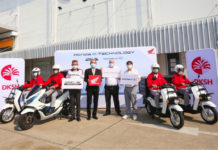Bangkok’s medical ‘tourism’ boosts the city’s bottom line
For some years now Thailand, and Bangkok in particular, has promoted itself as a destination for those who are termed ‘medical tourists’. Calling it medical tourism might be somewhat of a misnomer in that foreigners will book a specialist procedure at a reputable medical facility, arrive, usually by air, spend maybe a couple of days sightseeing and then have the medical procedure performed.
Depending on the procedure, the recovery time might be as little as a few hours or last a few weeks if not longer. Chances are, once the procedure has taken place and recovery is complete, most of the patients will be on the first available flight out of Thailand.
Nevertheless, the potential impact on local businesses should not be overlooked. Sure, the person travelling to Bangkok for medical purposes is not necessarily going to be spending much, if any, of their time here sightseeing. Yet, most will be accompanied by one or more family members or close relatives. These people are likely to spend some time exploring the sights and sounds of the city.
Also, a successful operation may well mean the patient returns to Bangkok at a later date for further but less invasive treatment. At this juncture they may spend a lot of time sightseeing and, if the level of service they’ve received has been what they expected, it may well be they start considering Thailand as a place for future retirement. In other words, the long-term potential for Bangkok and Thailand from successful and relatively inexpensive medical procedures could easily be translated into increased revenue not only for the medical sector but also the tourism sector.
Of course an often overlooked advantage of a successful medical tourism programme is the knock-on effect for businesses not directly associated with medicine and tourism.
The most obvious is the food and beverage sector for both foreign patients and the employees of hospitals. An increase in medical tourists puts added pressure on the hospital system, which in turn should lead to greater opportunities for employment in this sector. Greater employment means catering companies will need to supply more foodstuffs and beverages into that sector, which, of course, means even more people need to be employed to cope with the demand.
A medical facility which becomes popular with foreigners as a preferred medical destination is going to grow in size and that augurs well for ancillary businesses in the immediate area.
Thailand has garnered a reputation in recent years as a country with internationally accredited medical facilities. Thailand was the first country in Asia to achieve JCI accreditation in 2002, and 15 hospitals are now so accredited.
More and more of Thailand’s medical professionals are highly qualified and a number have won awards for their work. Approximately 500+ doctors practicing in Thai hospitals are American Board Certified.
For example, in July 2012 surgeons at Siriraj Hospital conducted the first successful robot-assisted knee surgery operation in Southeast Asia. The same hospital, in December 2009, performed the world’s first successful liver-to-liver transplant from a live donor.
A major plus for Bangkok and Thailand is there are no waiting lists. There are sufficient qualified surgeons that there is little, if any, waiting for scheduling even the most complex and invasive procedures using state-of-the-art technology. This fast-track ability is especially popular with potential patients from the United Kingdom and Australia. For Americans, it’s the lower costs of medical treatment compared with the USA that is the attraction.
Although medical tourism in general is popular in Thailand, her ASEAN neighbours Singapore, Malaysia, Brunei and the Philippines also has thriving medical tourism programmes. Yet for cosmetic surgery Thailand leads the way on the Asian continent.










